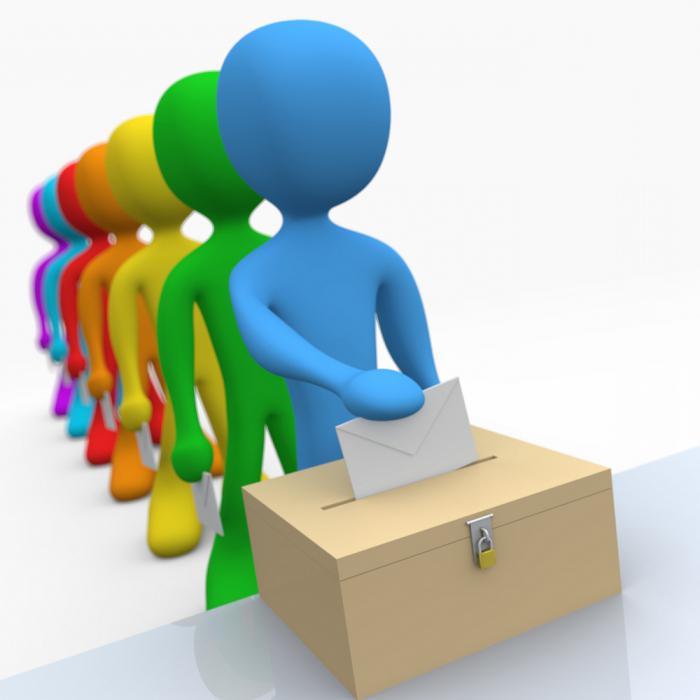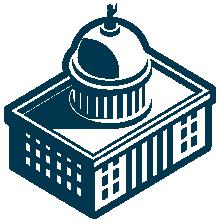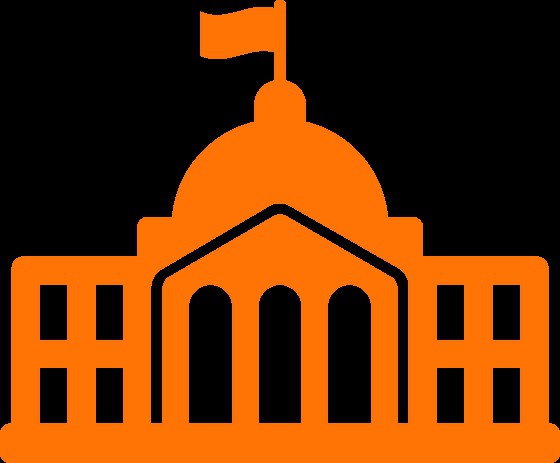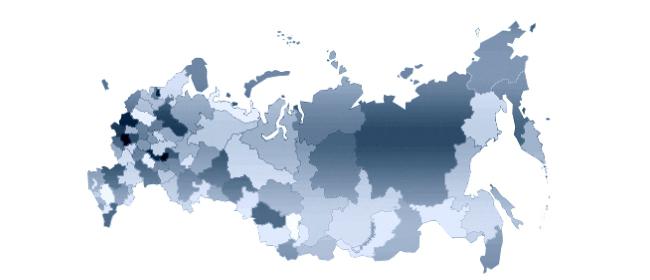Based on what principles does the state function? What is the evolution of the forms of political organization of society? What are the basic principles for the exercise of power by subjects of public administration in modern countries and, in particular, in Russia?
What is a state?
Before studying what the structure and functions of the state are, we will determine actually what we mean by that. There are many theoretical concepts in this regard. Among the most common is the following definition. The state is a complex system of interaction between people who are united on the basis of national or territorial identity, created with the aim of guaranteeing the basic principles of quality of life, security and freedom for every citizen.
People, consciously preferring to live in appropriate conditions, conclude a “social contract” with state power, “delegating” their governance to the government (parliament) or self-government on the principles of justice and reflection of public interests. In the early forms of statehood, when it came to associations of people in relatively small areas, more or less ethnically and culturally homogeneous, there was no need for "delegation". It was enough for citizens to choose, relatively speaking, an experienced “leader” or a group of those with the aim of streamlining the principles of self-government.

As the territories of states increased, the "leaders" ceased to be enough for everyone. Or, contradictions began to appear between them, requiring improvement of self-government models. At first, the functions of a “leader” began to be concentrated in the hands of an ever smaller number of leaders - ultimately, the only king. Later, elected authorities began to appear. So, for example, the structure of the Old Russian state included the institution of the popular council. In European countries, parliamentary structures began to form. In a more or less modern form, the political management systems of sovereign countries were formed in the late 17th - early 18th centuries. Theories have appeared that reflect the principles of separation of powers. In some states, they began to be put into practice. Now, according to them, the political systems of most countries function.
Having decided on the key subject of our small study, we can begin to study what the structure and functions of the state are. Let's start with the first term.
State structure definition
What is a " state structure "? According to the definition widespread among Russian political scientists, this is a system of political institutions and institutions that perform the functions necessary for the exercise of power by the relevant subjects of government. The structure of the state in its modern form is most often expressed in the spectrum of various government bodies, divided into three functional levels: legislative, executive, and judicial. Which, in turn, fall into a large number of structural units responsible for a specific direction in implementing the country's governance policy - ministries, agencies, committees, etc.

Some experts highlight the armed forces as a separate element in the structure of the state, as well as the bodies formed in case of emergency emergencies - such as, for example, the Provisional Government during the 1917 revolution, which was not originally provided for by the current laws of the country. The competence and range of powers vested in the relevant power structures are determined by the goals and objectives of the subjects of political governance.
There are terms somewhat in tune with the one in question, but which are other scientific categories. Such, for example, refers to such a concept as the "social structure of the state." It implies the classification of the country's population into certain groups based on the socio-political status of citizens. As an option - their belonging to the estates. That is, for example, the social structure of the state of the Middle Ages could be represented by such groups as peasants, the bourgeoisie, landlords, nobles, etc. This term has, therefore, a rather mediocre relationship to political elements and power institutions.
There is the concept of "state structure." In some contexts, it may be synonymous with the subject. But, as a rule, it denotes a certain political unit, enterprise or organization that has something to do with the state. That is, for example, the government is, of course, a state structure. As well as, for example, the federal budgetary institution "Information and Technical Center". Or Gazprom. All these are state structures. To use the basic term studied in our small study in those contexts when it comes to the relevant institutions or organizations should be careful not to make semantic errors.
Political Functions
The concept of "state structure" is often intersected with another concept - "political functions". By and large, both are phenomena of the same order. They reflect the principles and mechanisms on the basis of which the state power implements its obligations under a social contract. However, if the state structure is a set of institutions, that is, to a greater extent the “toolbox” of power, then political functions are, according to a popular point of view, the key goals and objectives for which the relevant government bodies are created. We can say that "functions" to some extent predetermine the "structure". For urgent tasks related to the management of political processes, specific institutions are created, the power structure of state bodies is formed.

In modern political science, it is customary to classify political functions into internal and external. The first include law-making, law enforcement, economic, social, cultural, as well as environmental functions. The second one is defensive and diplomatic (some experts emphasize within it the “collaborative” one, the essence of which is to build friendships and partnerships in the international arena).
Principle of separation of powers
We noted above that the principle of separation of powers is implemented in the political structure of modern states. What it is? How is the structure of the state mechanism arranged within it? It is assumed that power is divided into three main functional branches - legislative, executive and judicial. Each of them acts independently from the point of view of solving the tasks entrusted by the constitution or other legal acts, but at the same time it works within the framework of a certain commonality of key goals.

In connection with what arose the need for separation of powers? According to a widespread theoretical concept, this kind of structure of the state mechanism is the result of the development of democratic processes and the gradual formation in the socio-political consciousness of the criterion: power should not be concentrated in any particular institution or in the hands of an individual person. Thus, the legislative, executive and judicial branches of government are called upon to mutually limit their powers in order to minimize the likelihood of usurpation of key political competencies.
Parliament
The political structure of the state today, as a rule, implies the presence of parliamentary authorities. Which are the highest legislative institutions. Parliament performs the following main functions: drafting laws, representing the interests of various social groups in politics, and also overseeing the activities of the executive branch.
Government
The mechanism of the state implemented in most modern countries, its concept and structure, conceptualized in political theory, imply the presence of not only parliamentary, but also government institutions in the country's governance system. Which are the highest executive bodies. The functions of government institutions - ministries, agencies, services (assuming that the state mechanism adopted in Russia is described - the concept and structure of it in Russian political science as a whole do not cause discussion) - come down to the correct implementation of legal acts adopted at the parliamentary level, as well as by-laws - decrees, decrees, etc.
Courts
In turn, the judiciary resolves issues related to law enforcement practice in the aspect of existing laws. Or, as it happens in some countries, it publishes sources of law in the form of precedents, complementing the functions of the legislative and executive bodies that form the mechanism of the state. The concept and structure of case law is significantly different from the so-called "Roman" system of the functioning of laws, when the courts do not directly participate in the adoption of legal acts.
Which of the two models is more effective is the subject of active discussion. One way or another, the "Roman" system is more widespread in the world, including in Russia. Case law is most developed in the United States and Great Britain.
State and law
We noted above that the need to create a state arose when people wanted to provide themselves with a guarantee of living in security, freedom, with an appropriate quality of life. Over time, this "wish" was transformed into a law or a combination of those. Their observance has become an indispensable criterion today. Therefore, it is not enough that only a balanced state structure functions within the framework of a political system. And the rights of citizens should also be realized unconditionally.

The criteria by which the political system of a country is defined as capable of ensuring the key human and civil rights are very different. In many ways, their essence is determined by the prevailing social traditions and the culture of the people. In some states, for example, the right to express political interests is not considered a priority. In others, it is customary that the country has all the necessary resources to fulfill the needs of citizens in publicly talking about their own position in matters of power. The structure of the state and law there - both in terms of theoretical ideas about the ideal political system in the scientific community, and in the key to the practical activities of administrative entities - includes the obligatory presence of relevant institutions.
Power components
Some experts consider it legitimate to single out the basic components of political power that are characteristic of all types of state institutions. Among these are powers, rights, incentives, as well as responsibility. Indeed, they are all present in political systems, regardless of how the structure, form of state is actually represented. Even if we consider examples of the organization of power institutions in historical periods when there was no separation of powers, these components of political governance were always present. However, each of them, as modern political scientists believe, should be balanced in terms of feasibility on the part of a specific subject of the exercise of power. That is, with the passage of time and the natural process of political development, concepts and principles have been developed that make it possible to bring state management systems in line with this criterion. The theory of separation of powers, according to political scientists, has become one of the results of improving the key approaches of theorists and practitioners of public administration to finding a balance between these four main components of political governance.
Modern elements of the state mechanism
Obviously, the structure and forms of the state evolve over time. We noted this at the very beginning of the article: first there were “leaders”, then kings, later a parliament and separation of powers appeared. How are modern states "structured" ? Political scientists highlight the relevant elements of the political mechanism. Depending on the country, the criteria for their definition may vary. In Russia, according to a common point of view, this kind of elements are classified as:
- authorities (federal, regional and municipal levels);
- state organizations (security forces, control services, supervision, etc.);
- state institutions (schools, hospitals, libraries, etc.);
- state enterprises.
In some countries, some of the above elements may thus be predominantly private. In Russia, they are state-owned (as some analysts believe, mainly due to historical traditions and principles of state governance that developed in the Soviet era).
What is a "authority"
Let us dwell in more detail on the element of the first type, that is, on the authorities. What are its key distinguishing features? Modern scientific concepts that determine how the form of the state should look, its concept and structure, include the following set of criteria. So, the authority:
- is formed on the basis of the will of the subjects of political governance;
- carries out activities that are defined by sources of law;
- has an organizational structure, the characteristics of which are clearly defined legally;
- has certain competencies, rights, obligations;
- works in a specific territory (throughout the country as a whole, in a separate region, city).
Among the additional features characterizing the authorities are the availability of material resources (individual buildings, means of communication, etc.), systems for distributing the functional powers of employees (ranks, positions), and accountability to higher authorities.
State and municipalities
How do the concept and structure of the state relate to the principles of the implementation of municipal authority? The main delimiting criterion here is the relevance of tasks at the appropriate level of power. A municipality is a localized administrative-territorial unit - a city, district, district. The range of tasks, the solution of which is entrusted to the subjects of local self-government, as a rule, differs from that which is characteristic of federal authorities. The modern form of the state, its concept and structure, which are accepted as basic theoretical concepts in scientific schools, imply a significant degree of autonomy of municipalities - simply because, acting in a local aspect, the authorities will most likely be able to solve actual problems more effectively than higher structures of political governance.

What is the situation with the practice of delimiting the respective powers in Russia? The terms "state" and "municipal" power in the laws of the Russian Federation are differentiated. However, the key principles of political management of the systems implemented by the subjects of political governance of both types, as many political scientists believe and as the formulations in a large number of laws show, are very similar, sometimes almost identical. In many aspects of activity, the “state” and “municipal” authorities in Russia differ only in name.
However, the structure of the theory of the state adopted in many political science schools implies that good governance of the country is possible only if there is substantial autonomy in solving problems at the municipal level. Therefore, in spite of the external similarity of principles, power at the federal, regional and local level should be exercised in Russia with autonomy quite tangible by the subjects of its implementation.